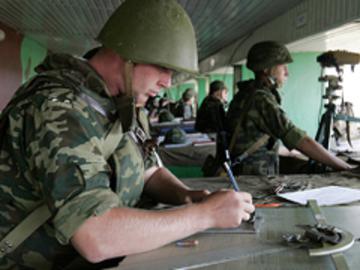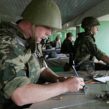
The Emperor Has No Clothes: Military Reform Without Military Science
Publication: Eurasia Daily Monitor Volume: 8 Issue: 66
By:

On March 18, the Russian press carried the announcement of the Presidium of the Academy of Military Sciences that the Academy’s General Assembly would occur on March 26, devoted to the assessment of the its work in the period 2005-2010. The presidium also stated that the assembly would address “some real issues of force development in Russia during the current era” (Nezavisimoye Voyennoye Obozreniye, March 18).
The Academy of Military Sciences, which was created in 1994 by Army-General (retired) Makhmut Gareev, emerged over the past two decades as a major think tank supporting the General Staff with contracted studies and reports relating to all aspects of defense policy. In this capacity it supported the official institutions of the Ministry of Defense and General Staff, including the Committee on Military Science of the Ministry of Defense. Two weeks earlier, Krasnaya Zvezda reported on all the positive accomplishments of the Committee on Military Science, highlighting the support it had rendered to military reform and defense procurement, which put military science in direct support of Defense Minister Anatoliy Serdyukov’s “new look” for the Russian Armed Forces (Krasnaya Zvezda, March 5).
Contradicting this positive analysis of the accomplishments of Russian military science, Viktor Baranets, military correspondent for Komsomolskaya Pravda, published an article on the General Staff’s reassessment of the “threat” posed by US missile defense systems deployed in Poland. Baranets noted that the General Staff had spent years speaking of such a deployment as a major threat to Russian national security and its strategic nuclear forces’ capacity to execute retaliatory attacks. Now the General Staff had suddenly reversed its position and said that no such threat existed. When asked how that could be, an unnamed source in the General Staff replied: “We reconsidered the problem and recognized that we had been mistaken.” Baranets asked how Russian military science could have been so wrong on such a vital question for so long (Komsomolskaya Pravda, March 16).
On the same day that the Presidium of the Academy of Military Science announced its general assembly, Aleksandr Aleksandrov published another article devoted to the direction of the development of military science, in which he reassured his readers that all was well with Russian military science. Citing Major-General Igor Sheremet, who assumed the post of Chairman of the Committee on Military Science of the Armed Forces in March 2010, Aleksandrov spoke positively of the accomplishments of Russian military science over the last two decades, culminating in contributions to military doctrine and the national security strategy. Sheremet stated that Russian military science had always promoted progressive ideas which later found expression in practical matters of force structure of the Russian Armed Forces. He spoke positively of two decades of progress since the collapse of the Soviet Union and cited the many dissertations defended and papers published. Sheremet pointed to the contributions of military science in leading to the shift in force structure from a division-centric force to a brigade-centric force. He also highlighted the reduction in the size of the officer corps in relation to the pool of enlisted personnel as another success in dealing with a legacy of the Soviet Armed Forces. The creation of four joint strategic commands from four military districts, announced in October 2010, was also informed by Russian military science. Moreover, the Committee on Military Science has also played a greater role in supporting defense procurement decisions. Its Chair was appointed and was involved in establishing the Scientific-Technical Committee of the Ministry of Defense, which has been charged with rationalizing defense procurement in support of the Military-Industrial Commission of the Russian government. The committee is even working on a unified weapons procurement system for all ministries: defense, internal affairs, border guards. Sheremet left the impression that each step of military reform on the way to Russia’s “new look” had been well-grounded in military science (Krasnaya Zvezda, March 18).
But the actual meeting of the Academy of Military Sciences on March 26 witnessed a very different reading on the contribution of Russian military science to Serdyukov’s “new look.” It was apparent that the General Staff had reconsidered the role of Russian military science and found it to be lagging behind the United States and Europe. No less an authority than the Chief of the General Staff, Army-General Nikolai Makarov, fired a salvo at the accomplishments of Russian military science, stating that it was twenty years behind military developments in the West. Arriving late after General Gareev’s opening remarks to the assembly, Makarov accused the General Staff itself of ignoring military developments beyond Russia and failing to analyze foreign combat experience, which was transforming the way wars are conducted. Russian military science had remained fixated on mass industrial warfare and on quantity when qualitative changes were recasting forces and the means of war. The first indicator of the stormy development of forces and means came with “Desert Storm,” and since then the pace of change has accelerated. It is connected with the transition from broad-front linear operations of multi-million man armies to maneuver defense of a new generation employing professional armed forces and network-centric military operations. Echoing the comments by the Commander-in-Chief of the Ground Forces, Colonel-General Aleksandr Postnikov, Makarov accused Russian military science of missing the importance of these developments and failing to follow their development, which reached a “new stage in Operation Iraqi Freedom. After the 2003 campaign [in Iraq] our military science did not make recommendations to the Armed Forces. We continued to live with the views of the 1970’s,” Makarov asserted. A gap appeared between military science and the needs of the troops. These remarks were a direct attack upon Army-General (retired) Yuri Baluyevskiy, who had served as Chief of the General Staff from 2004 to 2008 and, since retirement had become the chief military advisor to the Security Council, being touted as one of the leading critics of Serdyukov’s “new look” (www.vesti.ru, March 28).
This failure to appreciate the transformation of warfare only became apparent after the Russian Armed Forces went to war. Serious issues emerged in the conduct of combat operations against Georgia in August 2008. Those problems in force structure and C4ISR (Command, Control, Communications, Computers, Intelligence, Surveillance and Reconnaissance) forced the defense ministry to take a fresh look at the forces transforming warfare. The Ministry of Defense and the General Staff introduced reforms at a time of crisis without the benefit of deep research on the transformation of warfare. Speaking to the Academy of Military Sciences, Makarov leveled his criticism at both the General Staff and the retired military experts who compose the Academy itself (Vzglyad, March 28).
In 2008, circumstances demanded immediate actions: “What was needed was to rapidly bring the army out of that crisis in which we found ourselves. As a result we undertook the reform of the Armed Forces in the complete absence of a scientific-technical basis,” Makarov explained. Makarov’s remarks were taken by some as an apology for the failures of Serdyukov’s reforms, which many senior officers see as a threat to the military. But those same sources have never asserted that all went well in the Russia-Georgia War. Makarov was asserting that the senior leadership of the General Staff had failed in preparing the armed forces for future war because it had remained focused on the Soviet model of mass industrial war. As the Russian state lost the capacity to fight such a war, foreign military experience was demonstrating that new trends were reshaping warfare abroad. Makarov’s basic charge to the Academy of Military Sciences and the General Staff itself was to put military science on a new basis to deal with the new threats emerging in the 21st century. It must have been a difficult time for General Gareev, as he had to listen to the Chief of the General Staff assert that Russia had lost its “unblinking eye on the future,” which was charged with foreseeing the nature of future war. Makarov stated flatly:
For the last two decades we have been unable to bring military art to a modern level and continued to live with old metrics. In this period as the whole world has developed space technology, information control systems and have made mass purchases of weapons we have placed our bet on a mass army and the procurement of obsolete weaponry. We have ignored the development of methods as well as the means of armed combat (Nezavisimaya Gazeta, March 30).
Marshal Nikolai Ogarkov, who had warned of a coming “revolution in military affairs” and had been dismissed as the Chief of the Soviet General Staff, had become a prophet without honor in his own land. Military science was like an old Russian noble family living with its inherited title but with empty pockets. The inheritance that Gareev saw as so valuable was an empty relic good only for covering a chamber pot. The General Staff’s failure to foresee had undermined the most recent effort at military reform and left the fate of the “new look” under a cloud of improvisations without intellectual or organizational coherence. Gareev’s own remarks promised to look to the future but he kept returning to the same imperative of measuring future war against the criteria of the Great Patriotic War, which had been fought and won by a mass mobilization army at great cost.




